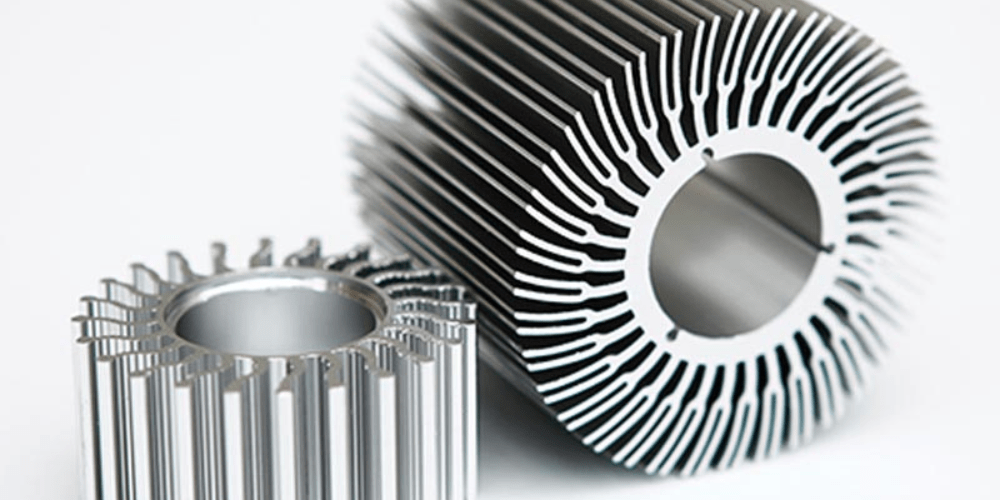Copper pipe heat sinks are an effective way to dissipate heat from electronic components. Several methods can be used to effectively use copper pipe heat sink:
- Air cooling – The most common method is to use natural convection to cool the heat sink. The copper pipes are exposed to the surrounding air, allowing the heat to transfer from the electronic components to the copper pipes, and then dissipate into the air.
- Forced air cooling – Another method is to use a fan to blow air across the surface of the heat sink. This increases the rate of heat transfer, allowing for more efficient cooling.
- Liquid cooling – A more advanced method is to use a liquid cooling system, where a liquid coolant is circulated through the copper pipes to dissipate the heat. This method is more efficient than air cooling and is commonly used in high-performance applications.
- Heat pipes – Heat pipes are another effective way to transfer heat from electronic components to a copper pipe heat sink. Heat pipes use a wick structure and a working fluid to transfer heat from a hot source to a cooler surface, such as a copper pipe heat sink.
- Finned heat sink – Copper pipe heat sinks can also be used in combination with finned heat sinks. The copper pipes are used to transfer heat from the electronic components to the finned heat sink, which then dissipates the heat into the surrounding air.
- Phase-change materials – Another method is to use phase-change materials (PCMs) to store and release heat. PCMs can be used in conjunction with a copper pipe heat sink to provide additional thermal mass and improve the overall thermal performance.
Why are copper pipes best for heat sinks
Copper pipes are often considered the best material for heat sinks due to their excellent thermal conductivity and high melting point. Here are some reasons why copper pipes are ideal for heat sinks:
- High thermal conductivity – Copper is one of the best heat conductors, with a thermal conductivity of about 400 watts per meter-kelvin (W/mK) at room temperature. This means that copper can quickly transfer heat from the electronic components to the heat sink, allowing for efficient heat dissipation.
- Corrosion resistance – Copper is resistant to corrosion and oxidation, making it ideal for use in high-temperature applications.
- Ductility – Copper is a ductile material, which means it can be easily shaped and bent to fit a variety of heat sink designs.
- High melting point – Copper has a high melting point of 1,085°C, which makes it suitable for use in high-temperature applications without the risk of melting or deforming.
- Cost-effective – Copper is a relatively low-cost material compared to other high-performance metals, such as silver or gold. This makes it an attractive option for many heat sink applications.
Overall, copper pipes are an excellent choice for heat sinks due to their high thermal conductivity, resistance to corrosion, ductility, high melting point, and cost-effectiveness.
Copper heat pipe vs copper heat sink
Copper heat pipes and copper heat sinks are both effective at dissipating heat from electronic components, but they serve different purposes.
A copper heat sink is a passive device that is designed to absorb and dissipate heat from electronic components through convection and radiation. It consists of a large, flat piece of metal, often made of copper, with fins or other structures that increase its surface area. When placed in contact with the heat source, the heat sink absorbs the heat and dissipates it into the surrounding environment through natural or forced convection.
A copper heat pipe, on the other hand, is an active device that uses the phase change of a working fluid to transfer heat away from the heat source. It consists of a sealed copper tube filled with a working fluid, typically water or a mixture of water and alcohol. The heat pipe absorbs heat from the source and evaporates the working fluid at the hot end of the pipe. The vapour travels through the pipe to the cold end, where it condenses and releases heat to the environment. The condensed fluid then returns to the hot end through capillary action, completing the cycle.

